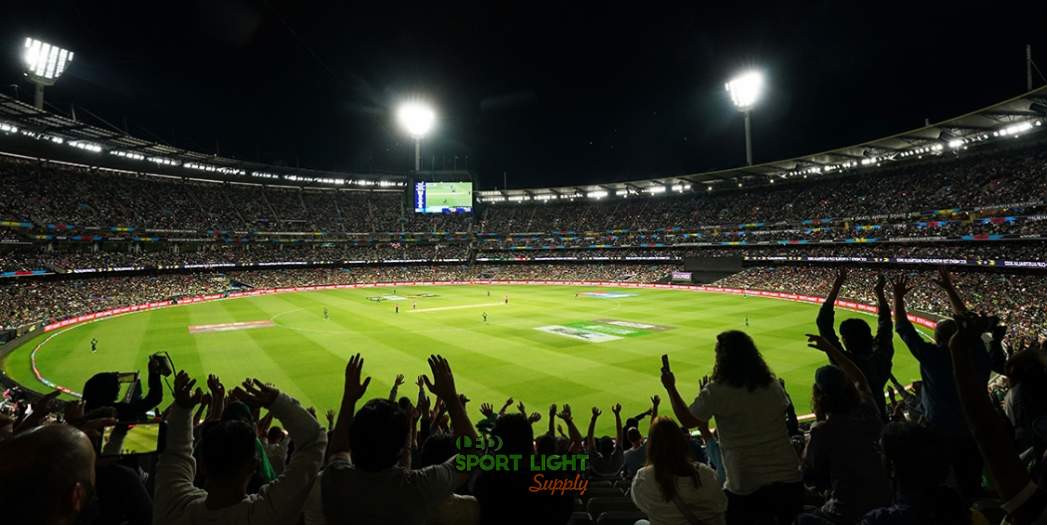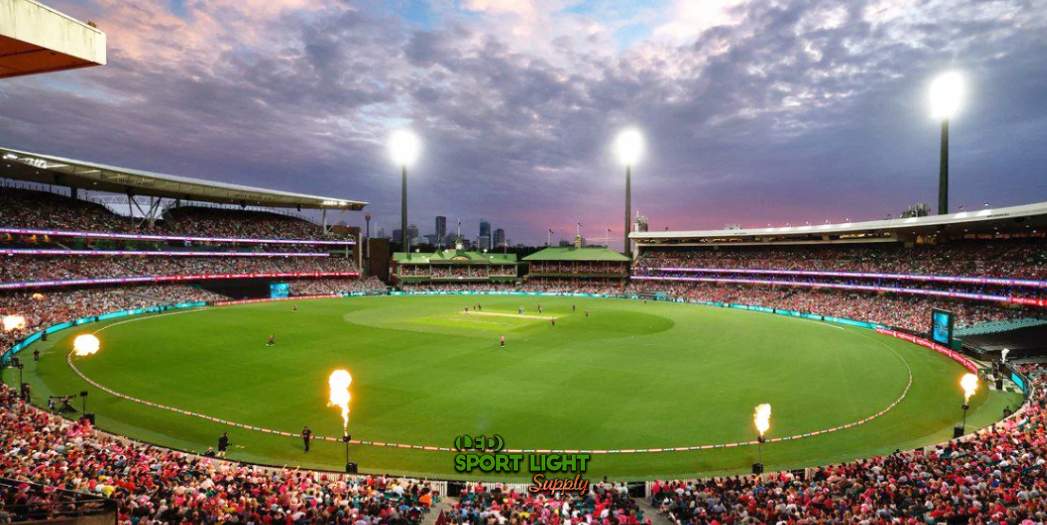Cricket, often regarded as a gentleman’s game, demands not only skill and strategy but also the perfect setting to showcase its grandeur. Central to this setting is the quality of lighting, which plays a crucial role in enhancing the visibility, ambiance, and overall experience of the game. As cricket evolves and the demand for high-quality matches increases, the role of advanced lighting technology becomes ever more critical.
Lighting is not merely a matter of illumination; it is an integral aspect of cricket that influences gameplay, player performance, and viewer experience. In cricket, the quality of lighting can affect everything from the ball’s visibility to the clarity of television broadcasts. As matches often extend into the evening, especially in formats like Twenty20, having the right lighting is essential to ensure that the game proceeds without interruption and with optimal visual conditions.
Table of Contents
ToggleOne of the most significant advancements in cricket field lighting is the adoption of Light Emitting Diodes (LEDs). LED technology offers unparalleled brightness and uniformity compared to traditional lighting systems. For cricket fields, this means a more consistent light distribution across the entire playing area. Uniform lighting minimizes shadows and bright spots, ensuring that players can see the ball clearly from any angle and making it easier for umpires to make accurate decisions.
LED lights are renowned for their energy efficiency. Compared to conventional lighting options like metal halide lamps, LEDs consume significantly less power while delivering the same or even higher levels of illumination. This energy efficiency translates into cost savings, both in terms of reduced electricity bills and lower maintenance costs. With the ability to last up to 50,000 hours or more, LED lights also reduce the frequency of replacements, further driving down long-term expenses.
Another advantage of LED lighting is its superior color rendering index (CRI). A high CRI ensures that colors are rendered accurately, which is vital in cricket where distinguishing the color of the ball against the pitch and players is crucial. High CRI lighting helps players, umpires, and viewers perceive the game in its true colors, enhancing the overall experience.

In cricket, the recommended illuminance level or lux is crucial for ensuring optimal playing conditions. For night games or those played under lights, the International Cricket Council (ICC) recommends a minimum of 1,500 lux for the main playing area. This level of brightness ensures that the ball remains visible even during high-speed play and provides clear visibility for both players and spectators. For international matches, the lux level may need to be higher, reaching up to 2,000 lux or more, to meet broadcast standards and provide a high-quality viewing experience.
The placement and angle of lighting fixtures are pivotal in cricket field lighting. The primary goal is to minimize shadows on the playing field and ensure that the entire area is uniformly lit. Lights should be positioned at strategic points around the field, typically mounted on high masts or towers. These fixtures should be angled to cover the entire playing surface without causing glare or uneven lighting. The design often involves a combination of floodlights positioned at different heights and angles to achieve the desired coverage and uniformity.
Controlling glare is another essential aspect of cricket field lighting. Excessive glare can not only hinder player performance but also affect the viewing experience for spectators. LED lights, with their precise beam control and the ability to direct light where it is needed, help mitigate glare. Additionally, modern lighting solutions incorporate features to reduce light pollution, ensuring that light is contained within the playing area and minimizing impact on surrounding environments.

The transition to LED lighting involves a significant initial investment. LED fixtures are generally more expensive than traditional lighting options such as metal halide lamps or high-pressure sodium lights. For a cricket field, the initial cost of installing LED lighting can range from $500,000 to $1 million, depending on the size of the field and the number of fixtures required.
However, this upfront cost is offset by the long-term benefits. LEDs offer substantial savings on energy consumption, as they are more efficient and require less power to achieve the same level of illumination. The energy cost savings can be significant, with LEDs consuming up to 50% less power compared to traditional systems. Additionally, the reduced frequency of replacements and lower maintenance needs further contribute to cost savings over time. For example, while traditional lights might need to be replaced every 1,000 to 2,000 hours, LEDs can last up to 50,000 hours, reducing replacement costs and downtime.
LED lighting systems require less maintenance compared to traditional lighting technologies. The longer lifespan of LEDs—often exceeding 50,000 hours—means fewer replacements and less labor involved in maintaining the lighting system. Traditional lights, in contrast, may need to be replaced every 1,000 to 2,000 hours, resulting in higher maintenance costs and more frequent disruptions.
The durability of LED lights, combined with their resistance to shock and vibration, further reduces maintenance needs. This reliability ensures that cricket matches can proceed uninterrupted, and any potential disruptions due to lighting failures are minimized. For cricket fields that host frequent matches or events, the reduced maintenance requirements of LEDs can lead to substantial cost savings and operational efficiency.
Investing in high-quality LED lighting enhances the overall experience for players, spectators, and broadcasters. The superior brightness and uniformity provided by LEDs improve visibility on the field, making it easier for players to track the ball and for umpires to make accurate decisions. This, in turn, enhances the quality of the game and reduces the likelihood of interruptions due to poor lighting conditions.
For broadcasters, high-quality lighting is essential for producing clear and vibrant television images. LED lighting’s excellent color rendering and uniform illumination contribute to better broadcast quality, attracting more viewers and increasing the appeal of the matches. This can lead to higher revenue from sponsorships and advertising, making the investment in LED lighting financially advantageous for cricket organizations.
In today’s world, sustainability is a key consideration for all aspects of design and operation, including cricket field lighting. LED lights are not only energy-efficient but also environmentally friendly. They contain no hazardous materials and are fully recyclable, making them a sustainable choice. By reducing energy consumption and extending the lifespan of lighting fixtures, LED technology contributes to a lower carbon footprint, aligning with global efforts towards environmental conservation.
Cricket fields are often situated in open spaces that can impact local wildlife. Modern lighting solutions are designed to minimize this impact by using technologies that reduce light spill and skyglow. By carefully designing lighting systems to limit the spread of light beyond the playing area, it is possible to protect nocturnal wildlife and preserve the natural environment surrounding the cricket field.
One of the standout benefits of LED lighting in cricket fields is the ease of maintenance. LED fixtures are designed to be durable and long-lasting, which means they require less frequent replacement compared to traditional lighting options. Additionally, many LED systems are equipped with remote monitoring capabilities, allowing for proactive maintenance and timely repairs. This reduced need for maintenance not only cuts costs but also minimizes disruptions to the cricket schedule.
LED lights are known for their robustness and reliability. They are resistant to shock and vibration, making them ideal for the demanding environment of outdoor cricket fields. Their ability to perform consistently under various weather conditions—be it rain, wind, or extreme temperatures—ensures that matches can proceed smoothly regardless of environmental challenges.
Lighting is not merely a matter of illumination; it is a crucial element in cricket that profoundly impacts gameplay, player performance, and viewer experience. The advent of LED technology has revolutionized cricket field lighting by offering superior brightness and uniformity, which ensures consistent light distribution and minimizes shadows. This not only enhances visibility for players and umpires but also improves the quality of television broadcasts. Although the initial investment in LED lighting can range from $500,000 to $1 million, the significant energy savings, reduced maintenance costs, and longer lifespan of LEDs provide substantial long-term benefits. Moreover, LEDs are environmentally friendly, further aligning with sustainability goals. Thus, while the upfront cost may be high, the overall advantages of LED lighting make it a valuable investment for modern cricket fields.
Drop us a line to receive a free lighting design